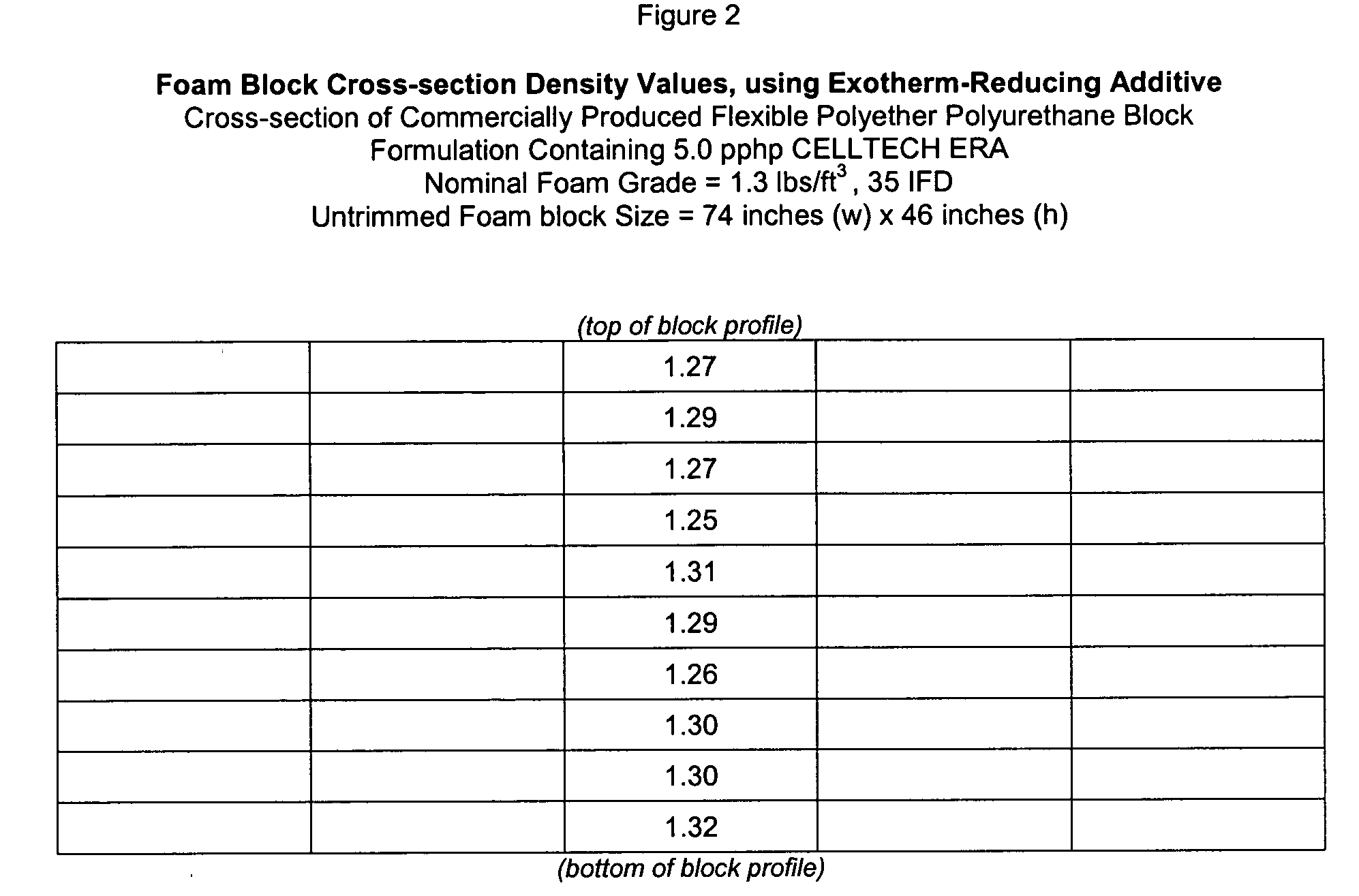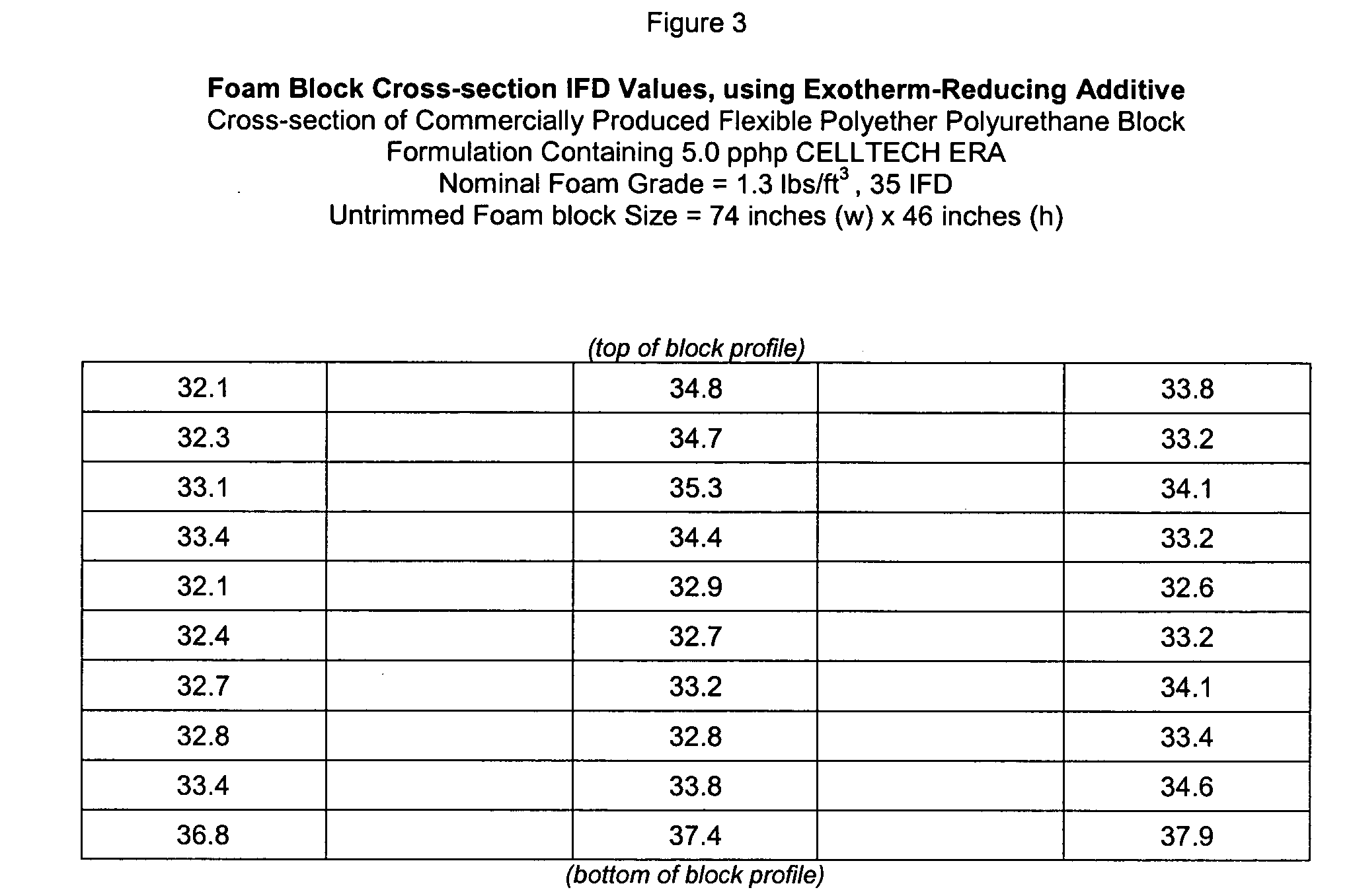Physical properties improvement additive for flexible polyurethane foam
- Summary
- Abstract
- Description
- Claims
- Application Information
AI Technical Summary
Benefits of technology
Problems solved by technology
Method used
Image
Examples
Embodiment Construction
[0046] A typical 1.3 pcf, 35 Indentation Force Deflection (IFD) formulation using the present invention (commercially available from the assignee of the present invention as CELLTECH.RTM. ERA Additive) is as follows:
2 Parts per Hundred Component (based on polyol) ALCUPOL* F-5511 Polyol 100 (55 hydroxyl, EO / PO polyether triol) Water 4.90 CELLCAT* 215 Amine Catalyst 0.10 Union Carbide* L-620 Silicone Surfactant 0.85 CELLCAT* C-2 Tin Catalyst 0.23 CELLTECH* EPA Additive 5.0 Toluene Diisocyanate 80 / 20 (105 index) 58.65
[0047] Concentrations of each ingredient are given based on "parts per hundred" of the polyol. The formulation is always based on "100 parts polyol". The formulations are generally based on "100 parts polyol". To determine the stoichiometric amount of isocyanate to be used (or in this case, an 5% excess of TDI, denoted as "105 index"), the total equivalent weight of hydroxyl functionality in the mixture is calculated (polyol, water and any other hydroxyl-containing compone...
PUM
| Property | Measurement | Unit |
|---|---|---|
| Percent by mass | aaaaa | aaaaa |
| Fraction | aaaaa | aaaaa |
| Foam | aaaaa | aaaaa |
Abstract
Description
Claims
Application Information
 Login to View More
Login to View More - R&D
- Intellectual Property
- Life Sciences
- Materials
- Tech Scout
- Unparalleled Data Quality
- Higher Quality Content
- 60% Fewer Hallucinations
Browse by: Latest US Patents, China's latest patents, Technical Efficacy Thesaurus, Application Domain, Technology Topic, Popular Technical Reports.
© 2025 PatSnap. All rights reserved.Legal|Privacy policy|Modern Slavery Act Transparency Statement|Sitemap|About US| Contact US: help@patsnap.com



